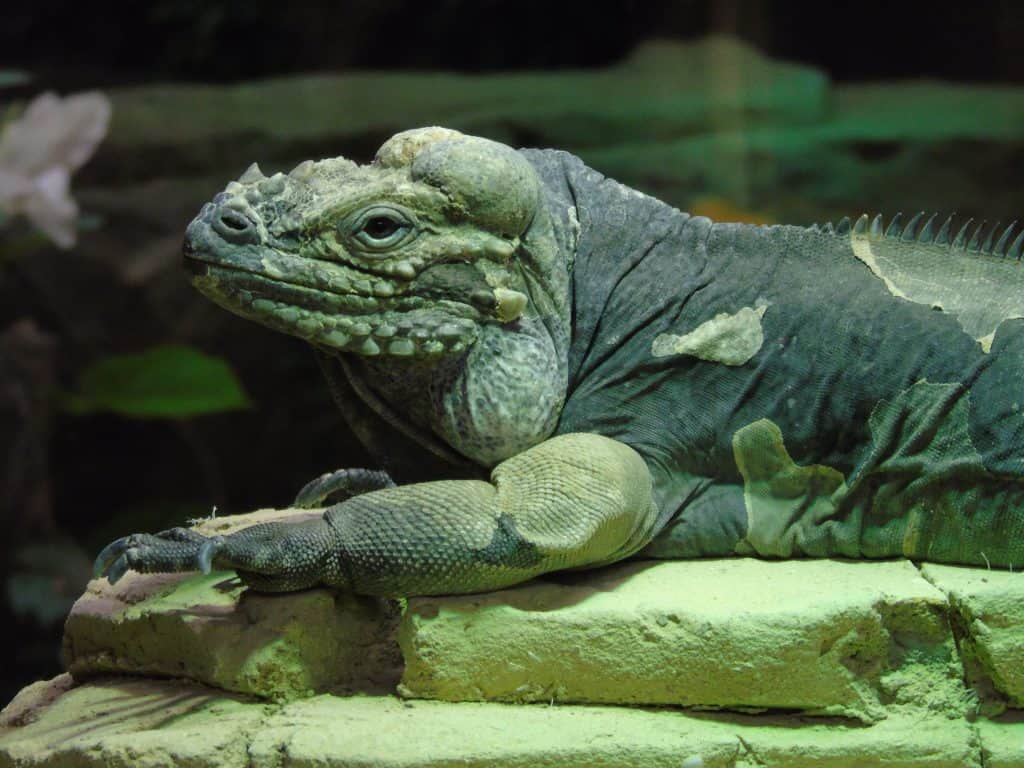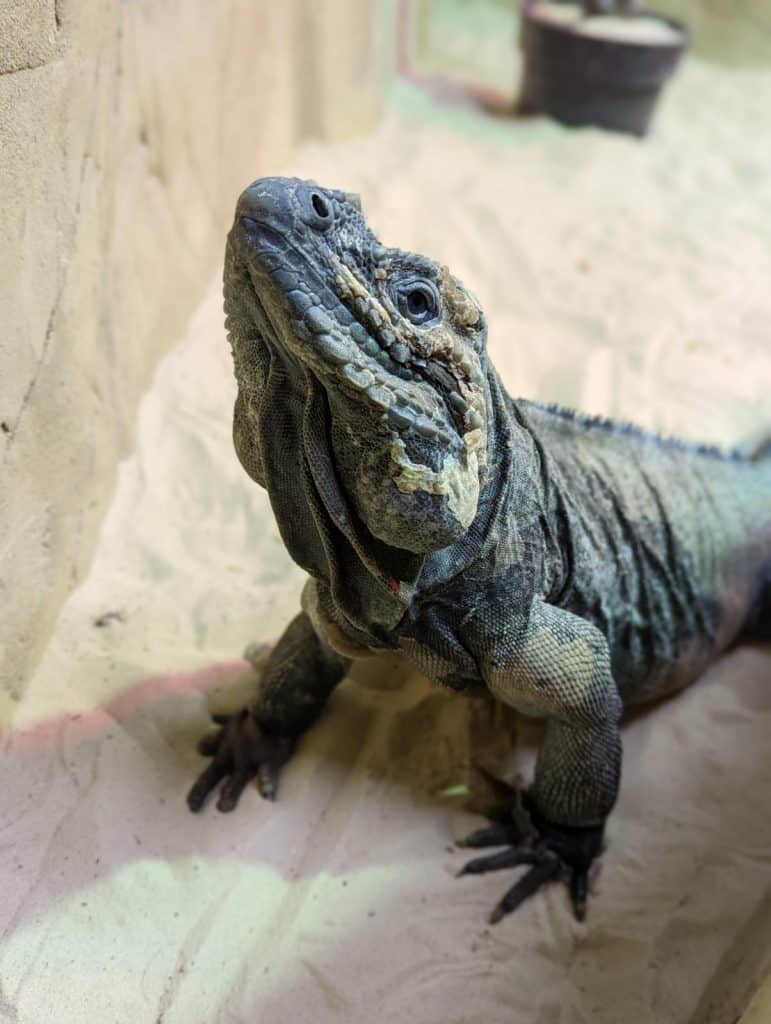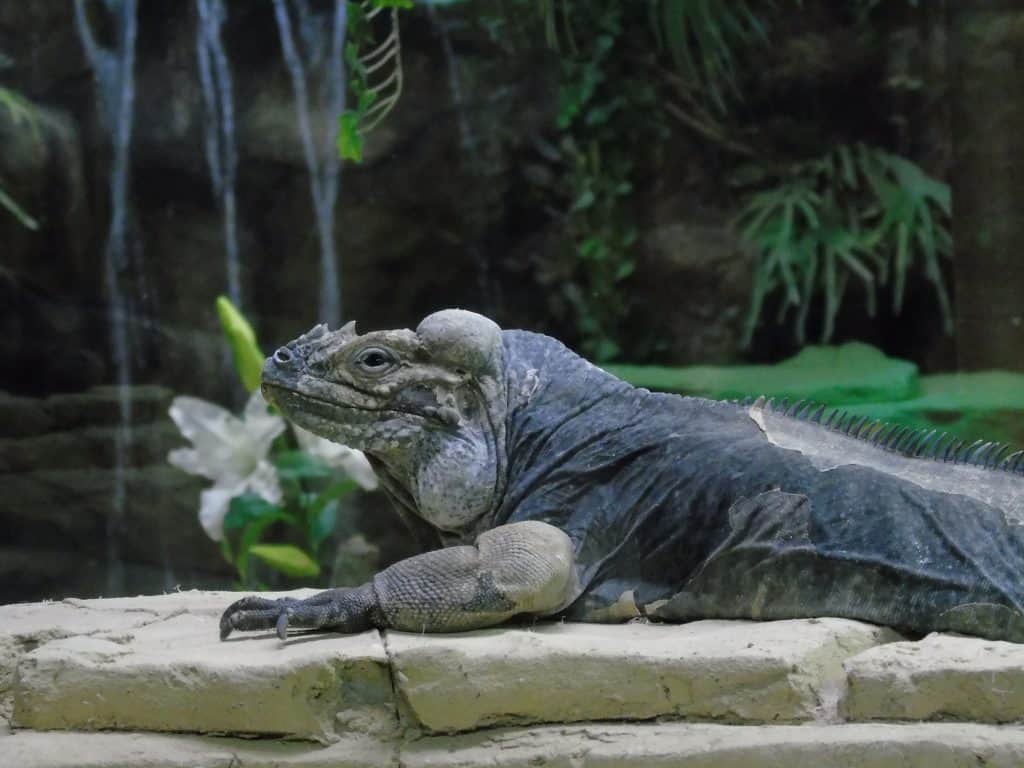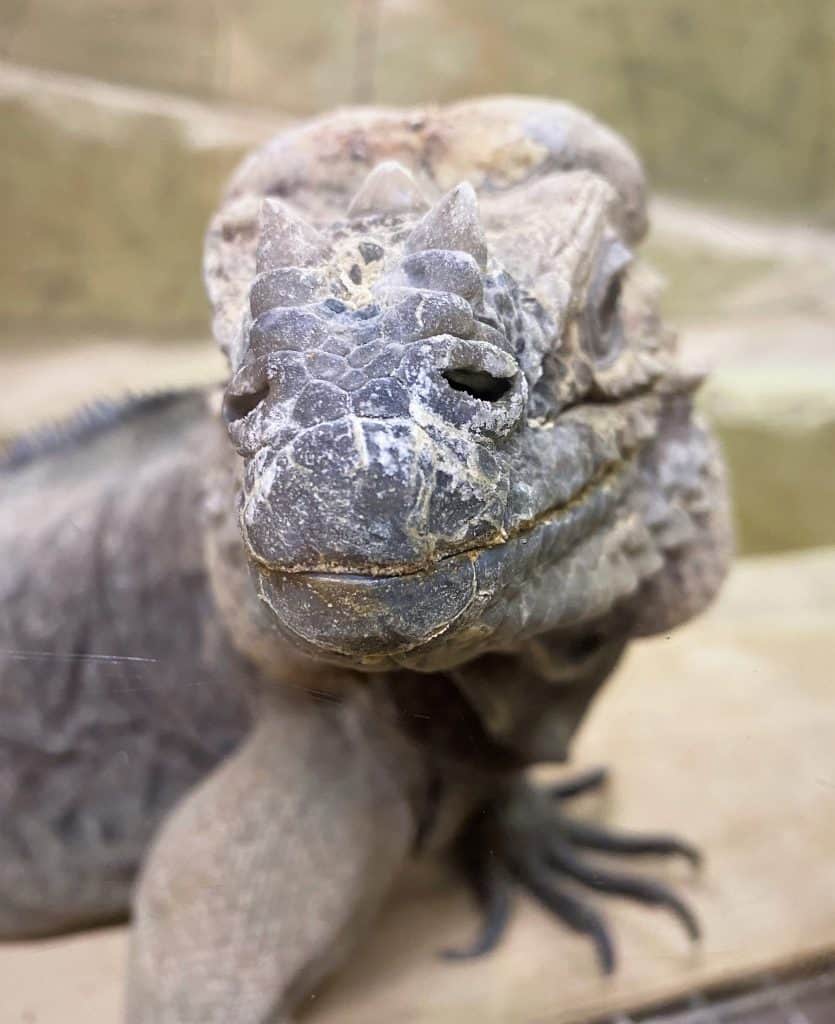Welcome to the start of Wingham’s’ 2023 blogs! I hope everyone had a wonderful Christmas and New Year, however you decided to spend it.
Any reptile enthusiasts out there, you’re in luck, as the reptile team has been thrown into the mix of blogs and we’ve been honoured with bringing you the first blog of 2023.
A quick introduction to myself
My name’s Hannah and I’ve been here at Wingham on the reptile team since 2017. I’ve kept reptiles and amphibians for around 10 years in total now and although I love most reptile species, geckos have always been a firm favourite for me.
I thought I could use the reptile blogs to introduce you to the species you’ll find here at Wingham and talk to you about the much-loved individuals on the section. Then, once the new Reptile House is open, you may be able to point out your favourite individuals to your friends and family!
This blog will be dedicated to our Rhino Iguanas (Cyclura cornuta).
Rhinoceros Iguanas
Rhino Iguanas are an Endangered species of lizard that live on Hispaniola, a Caribbean Island, and some surrounding islands. They’re threatened by things such as habitat loss (both natural loss and loss caused by humans) and are a target for illegal poaching for food and medicinal purposes as well as the pet trade. Other animals on the islands will also predate on the Rhino Iguanas or their eggs and pose a threat to the species.
These guys are active during the day and spend a lot of their time basking in the warm sun. They are predominantly herbivores and will eat plants and fruits, but they’re also considered opportunistic omnivores as they will occasionally eat insects, carrion and other small reptiles if they can catch them.
If you hadn’t already guessed, Rhino Iguanas get their name from the pseudo-horns they grow on their faces.
We have three Rhino Iguanas here at Wingham Wildlife Park: Belle, Wendy and Toby.
Belle
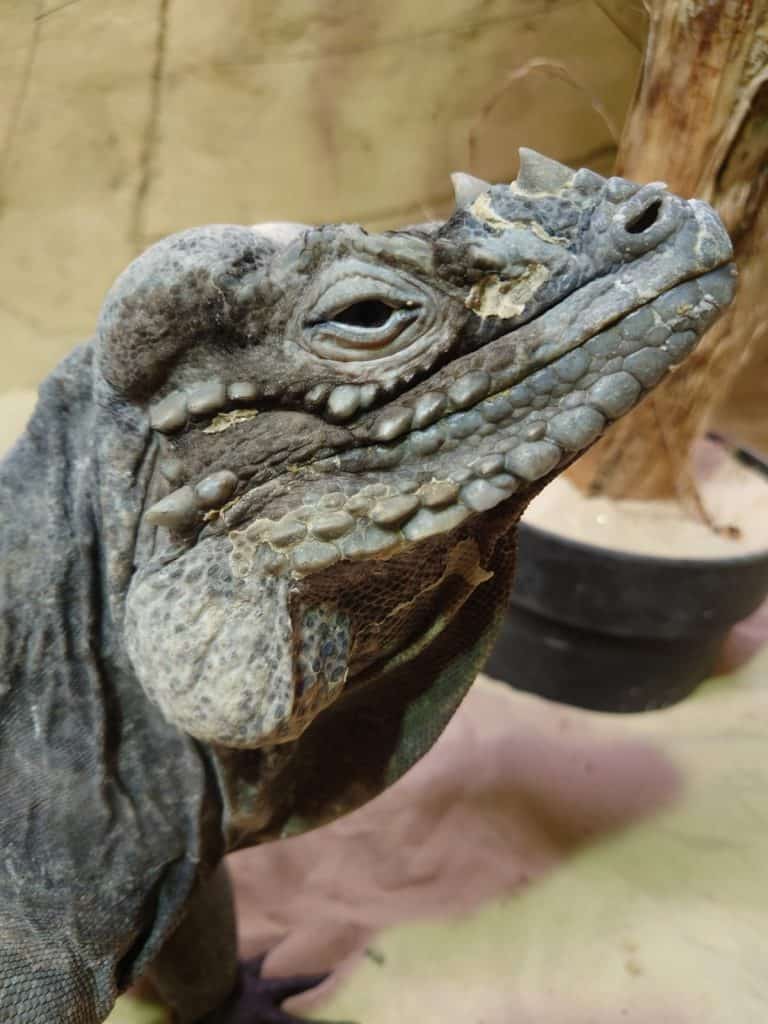
She got her name because one of her keepers thought she was beautiful, so she deserved a pretty name, therefore she was called Belle. Belle is the oldest of our three Rhino Iguanas and she is often called “Big Boss Lady”. Belle is the largest of our three Rhino Iguanas.
Some of Belle’s favourite things:
- Fruit, especially banana.
- Red socks (because tasty fruit is also red).
- Following her keepers around the enclosure as they clean.
Some of Belle’s least favourite things:
- The red watering can.
- Bubbles (apparently these are very scary).
- Being moved by her keepers when she’s in the way.
Wendy
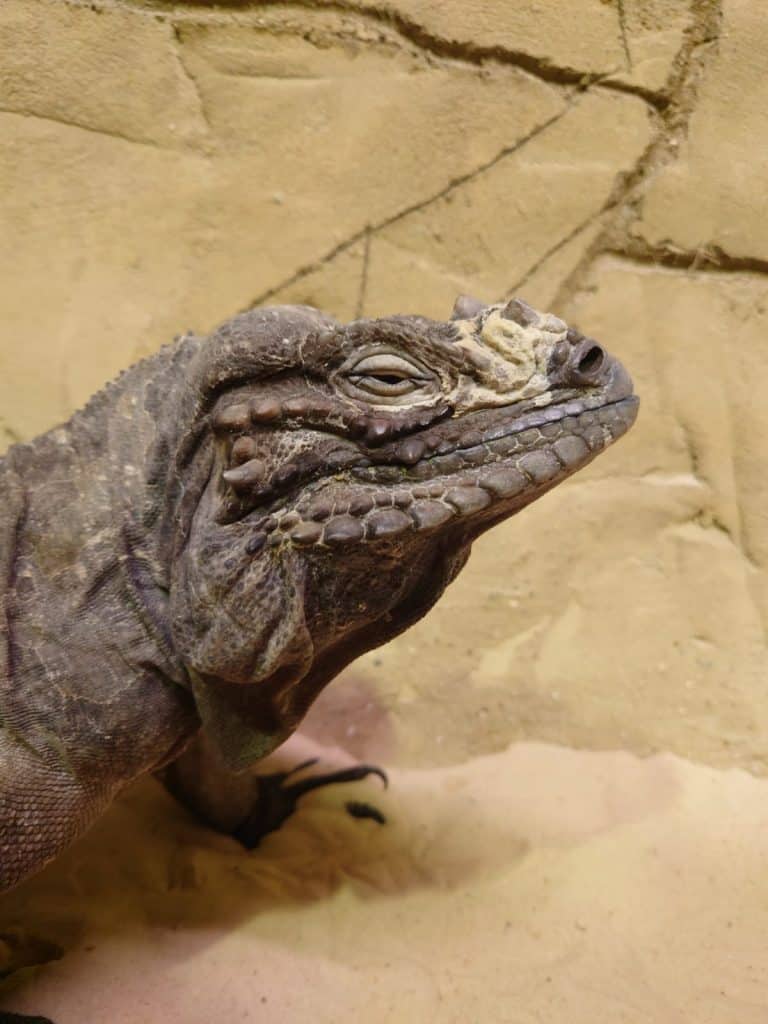
Wendy got her name because one of her keepers said that Belles name reminds her of Taco Bell, so she was named after Wendy’s. She’s the smallest of our Rhino Iguanas, but not by much. She is also the most chilled of our iguanas.
Some of Wendys’ favourite things:
- Fruit, all fruit.
- Being lightly misted with the water sprayer.
- Exploring cardboard boxes
Some of Wendys’ least favourite things:
- Bubbles (she also finds these scary)
- People tapping/banging on the glass
She’s so chilled that I can’t even list a third thing.
Toby
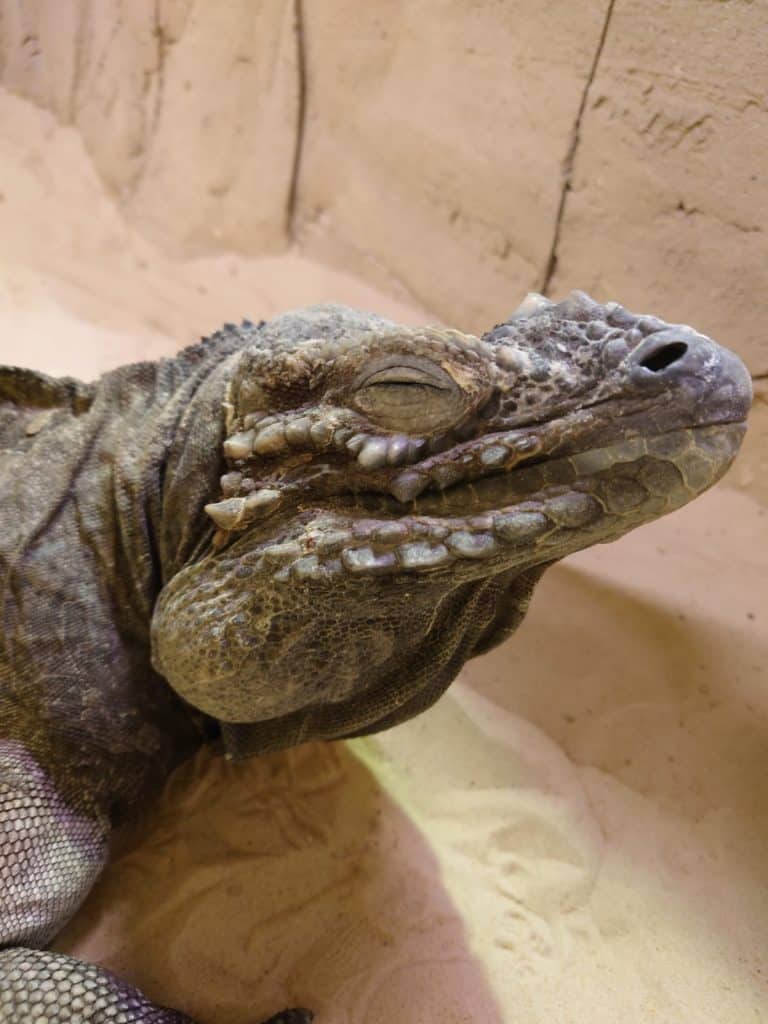
Toby got his name the same way Wendy got hers, but he was named after Toby Carvery. He is the middle-sized Rhino Iguana that we have here at Wingham. He is also the one you may see communicating most (keep reading to see how our Rhinos communicate with each other).
Some of Toby’s favourite things:
- Food, just all food.
- Any food-based enrichment.
- Chilling on the heated windowsill
Some of Toby’s least favourite things:
- Bubbles (who knew bubbles could be so scary, right?)
- Belle when she steals his fruit from his food bowl.
- Being touched or moved by his keepers.
Communication amongst Rhino Iguanas
Our Rhino Iguanas have several different ways that they communicate to each other and to us keepers too. The most common thing you may see from our Rhino Iguanas is some head bobbing where they look like they’re nodding their head up and down. This head bobbing can be fast to warn others that they’re not happy, or slow to express submission and show others that they are not a threat. Our Rhinos will also tilt their head side to side for the same effect, rather than perform the up and down bobbing.
There will be times where our Rhino Iguanas make a scoff noise to each other or to the keepers which is their way of warning each other or telling each other off. Because Rhino Iguanas are good at reading each other’s body language all these methods are enough for them to completely avoid conflict and it is very rare for the situation to escalate.
If these methods didn’t work to diffuse a situation, then they may resort to chasing, biting and tail-whipping. Rhino Iguanas have a mouthful of sharp teeth and a powerful bite. Their muscular tail is covered in rough scales and they can use it like a whip to hit a threat and leave grazes and welts. They may also vocalise loud hisses and make themselves look bigger by standing tall and arching their back and tails.
Spot the difference between our Rhino Iguanas
Have a look at the photos of our Rhino Iguanas and see if you can spot the difference between them. Everyone on the reptile team can tell them apart by size, what their heads look like and a few other minor distinguishing marks.
I hope you’ve enjoyed learning a little more about our Rhino Iguanas and next time you visit them, have a go at telling them apart while they’re hanging out in their new enclosure in the new Reptile House.
